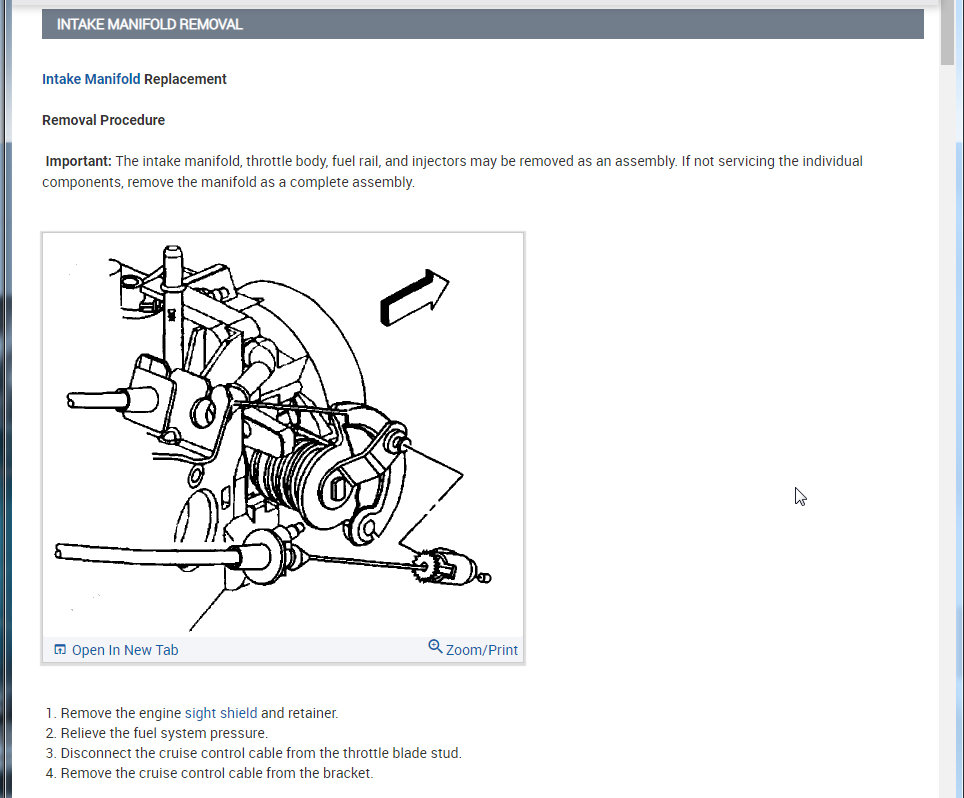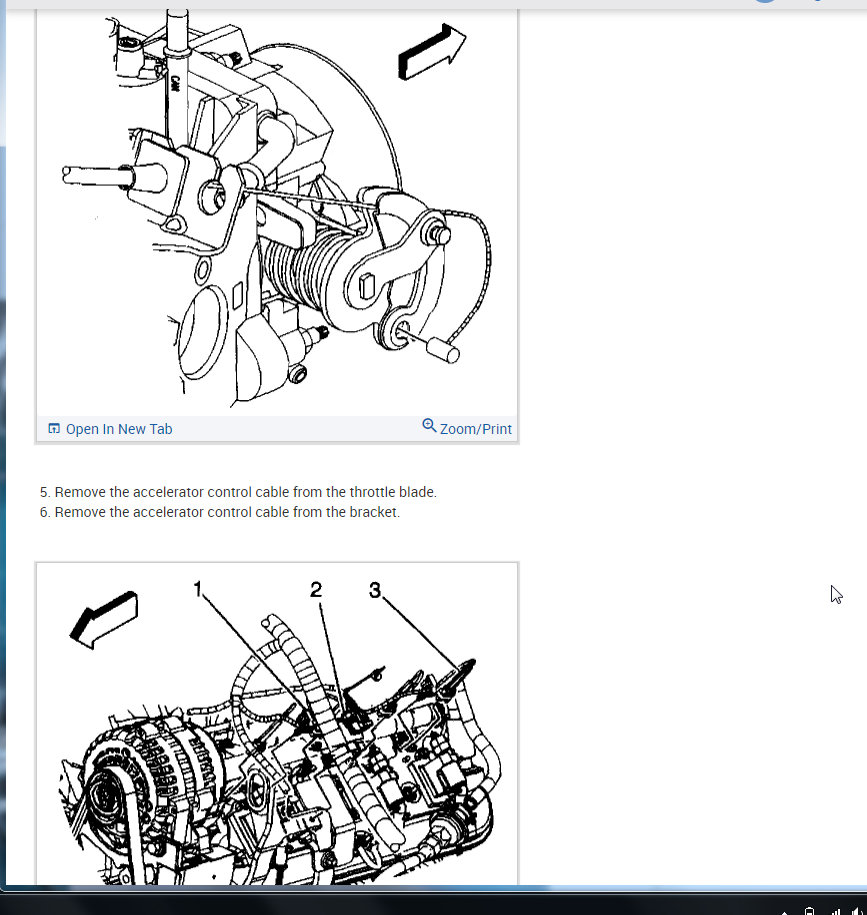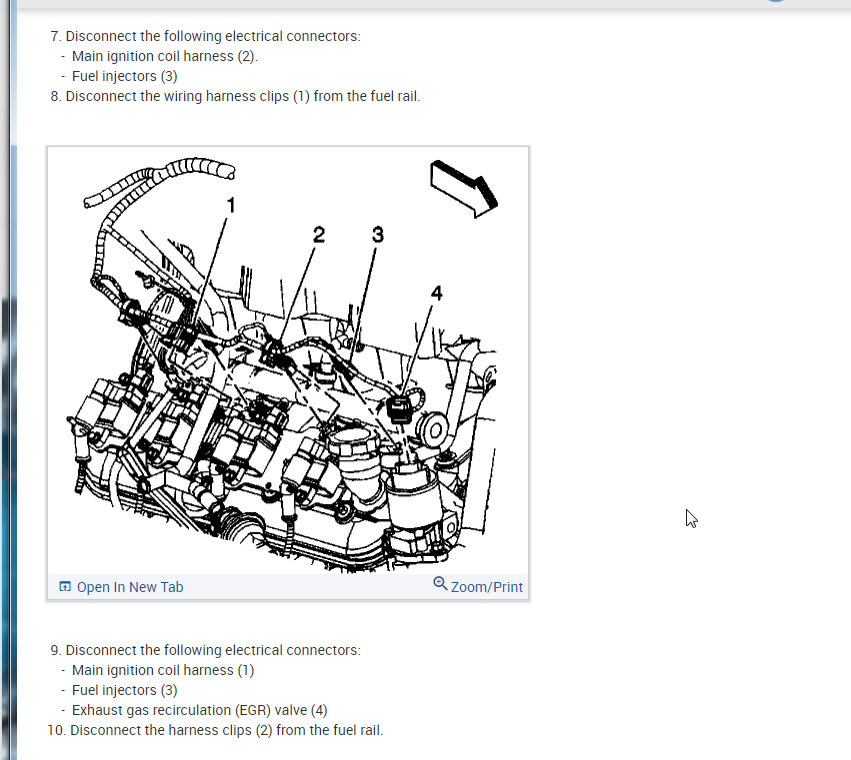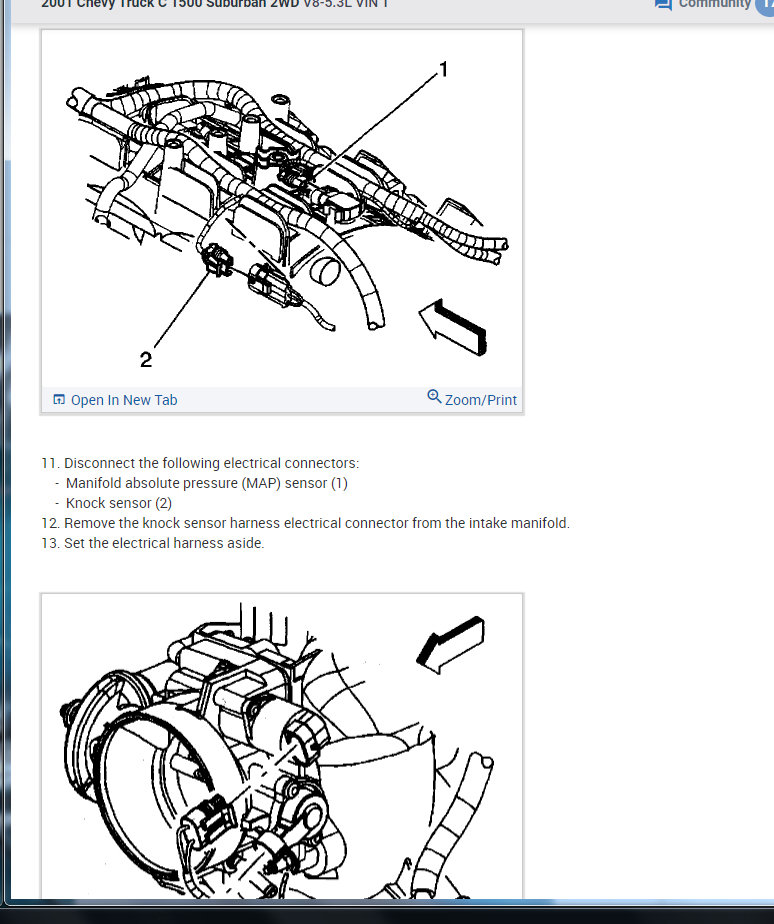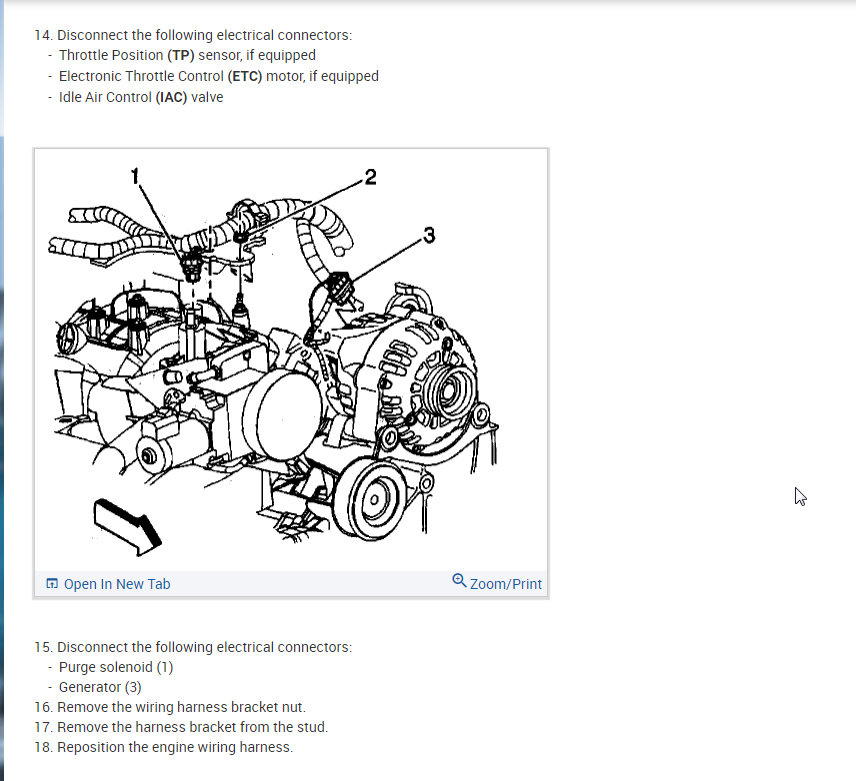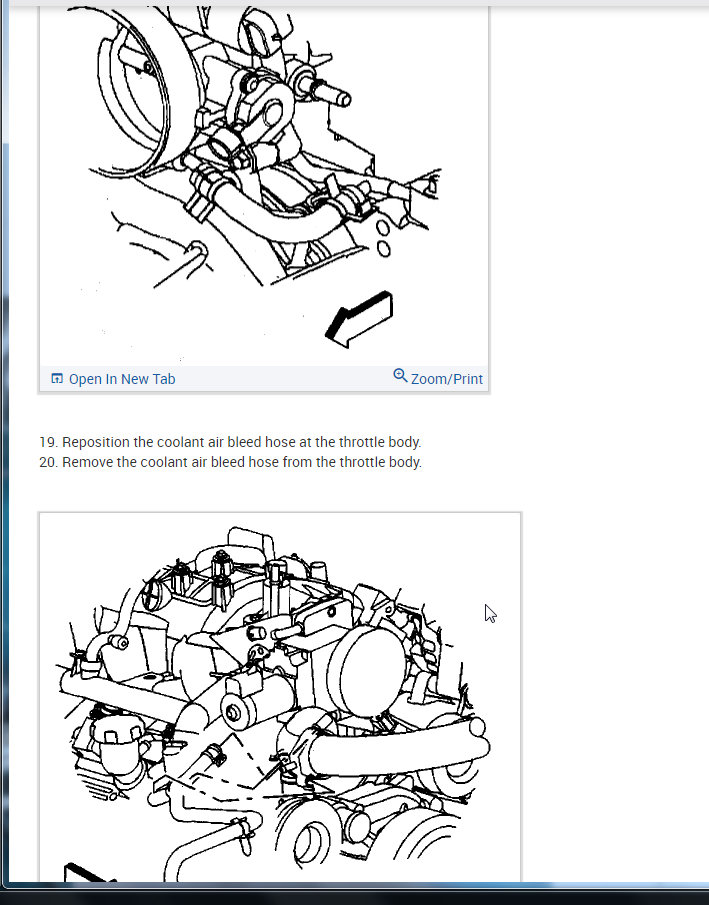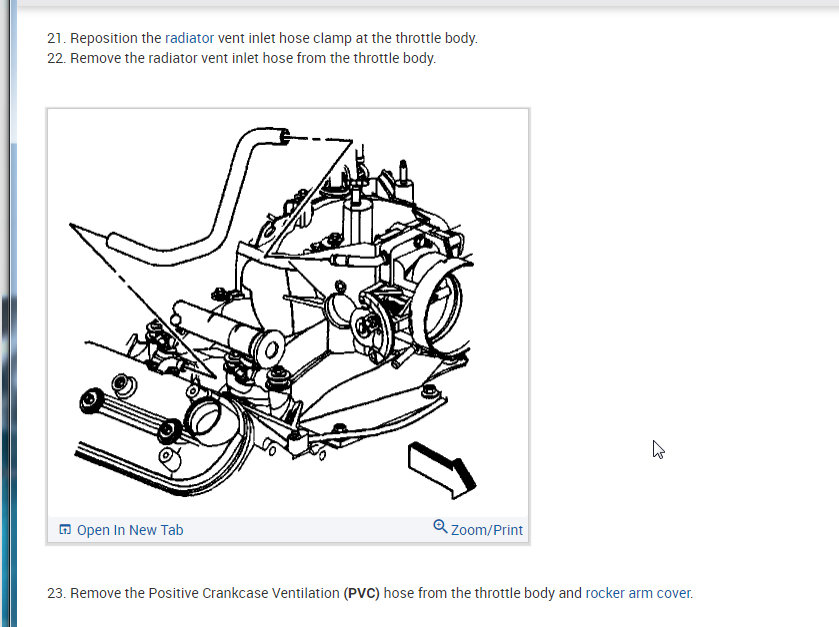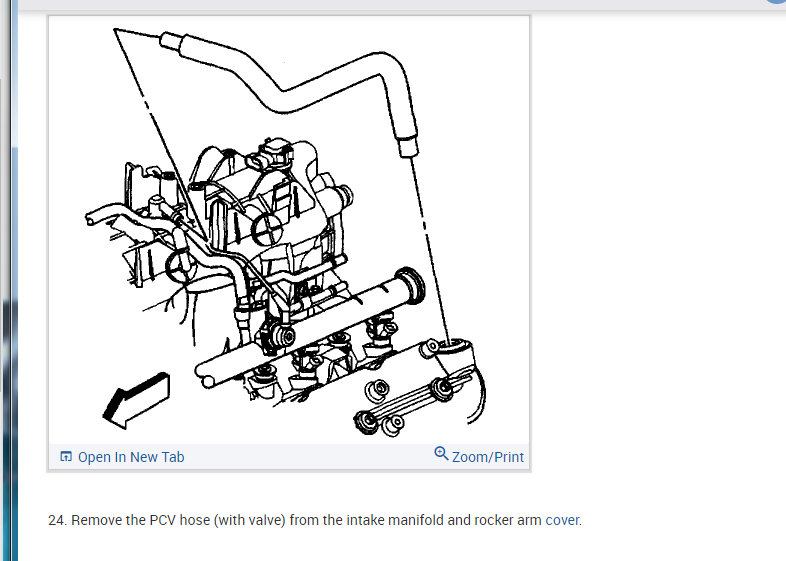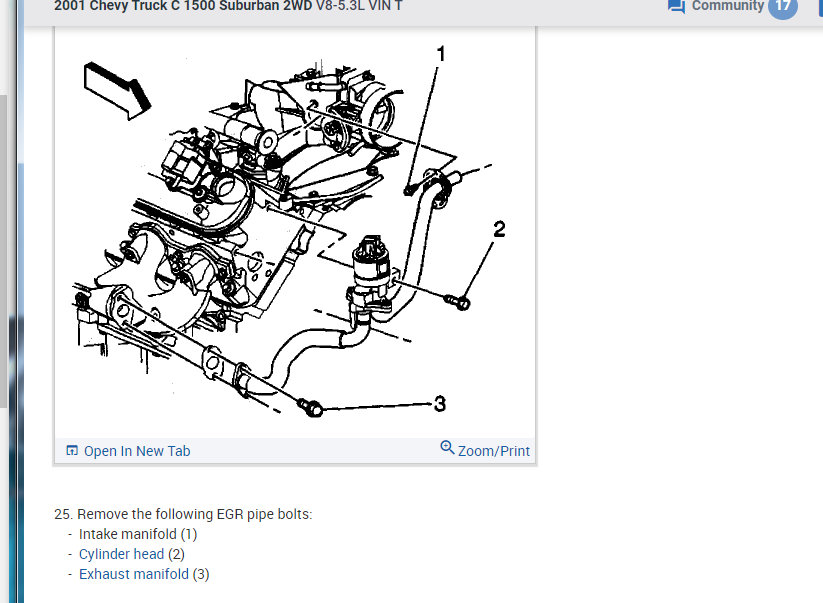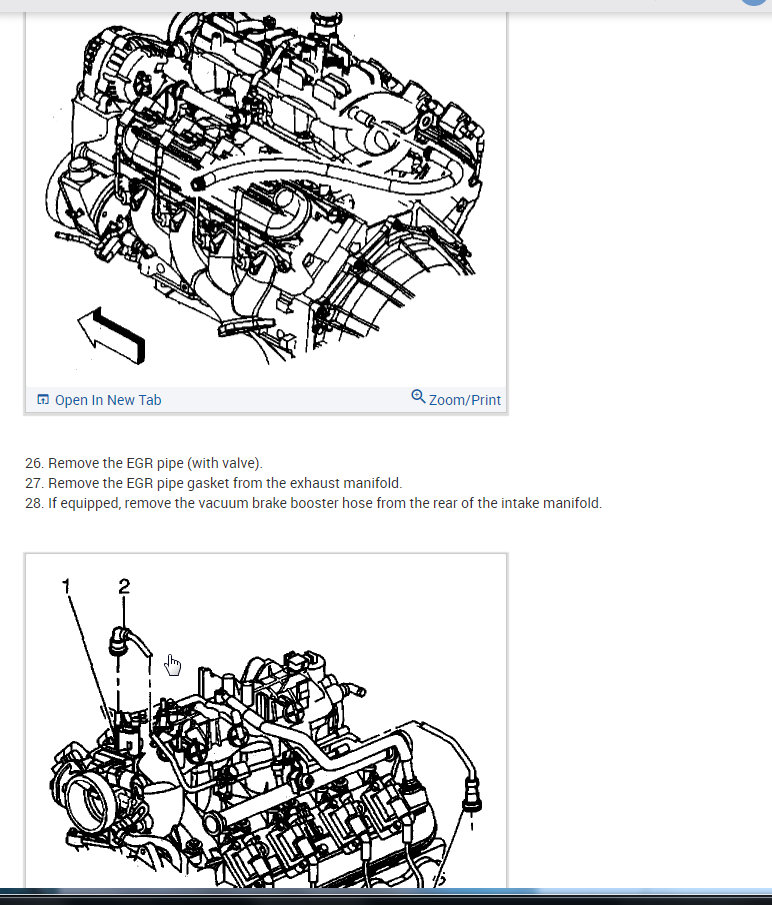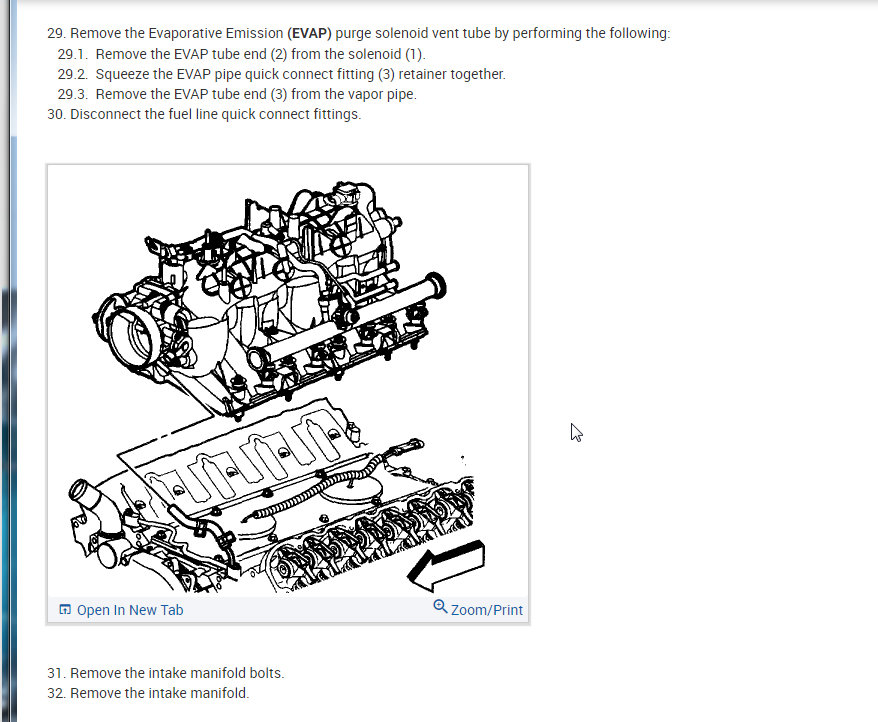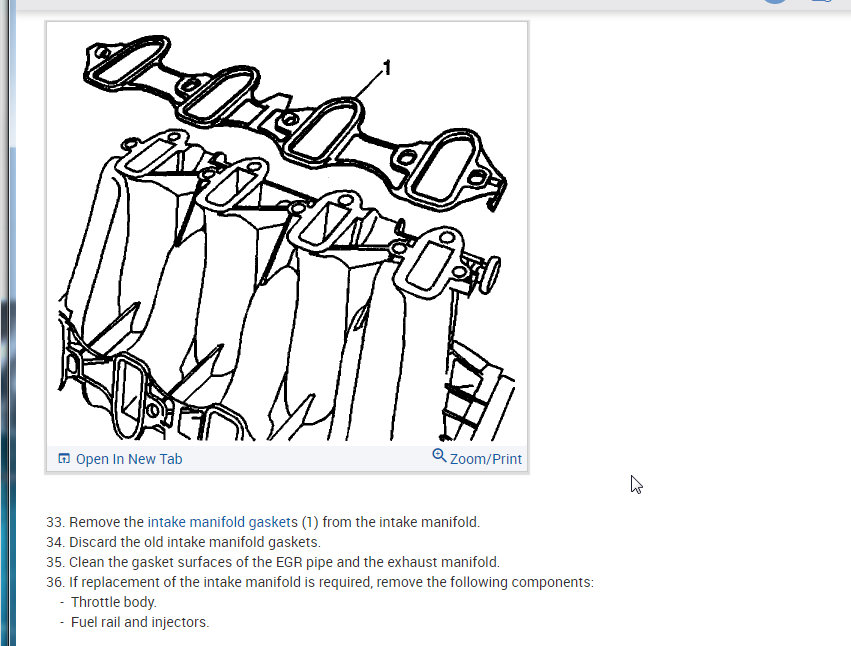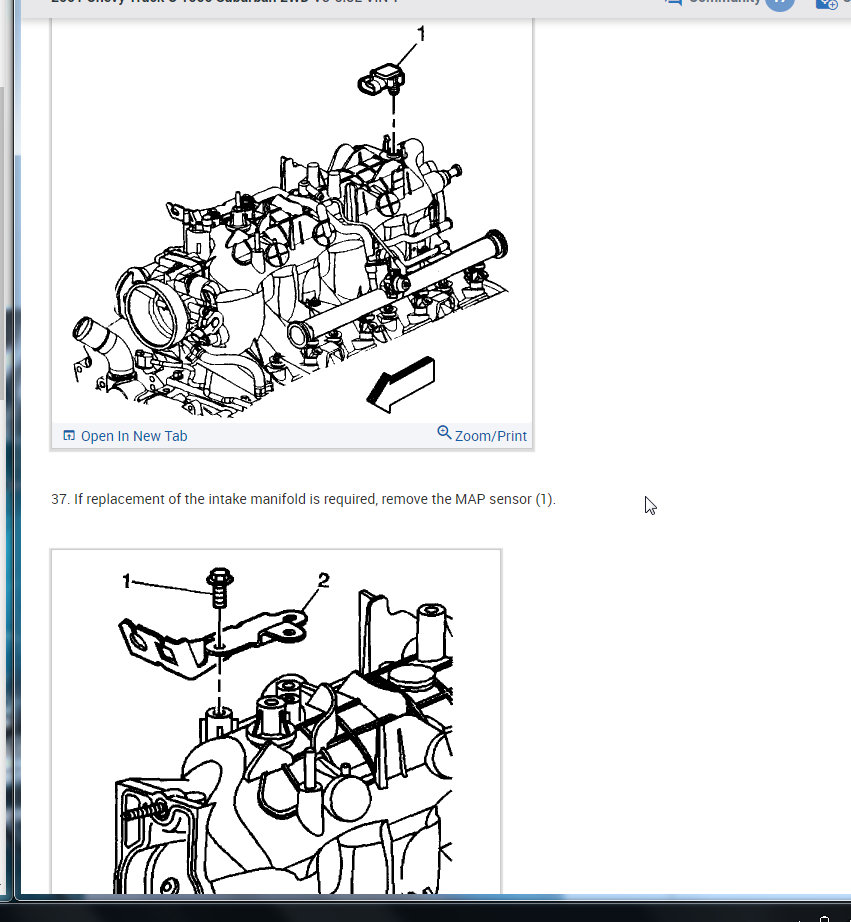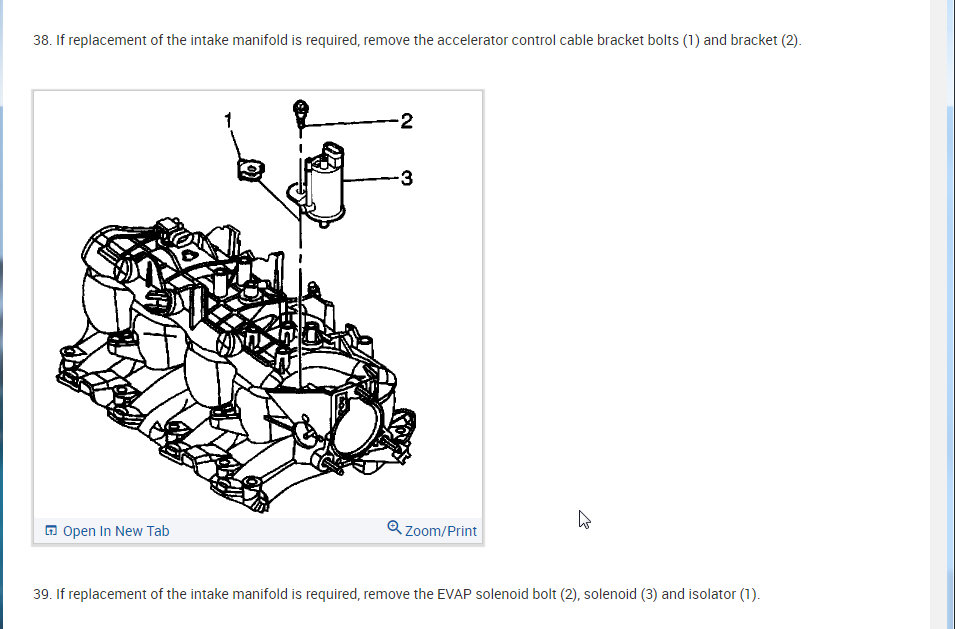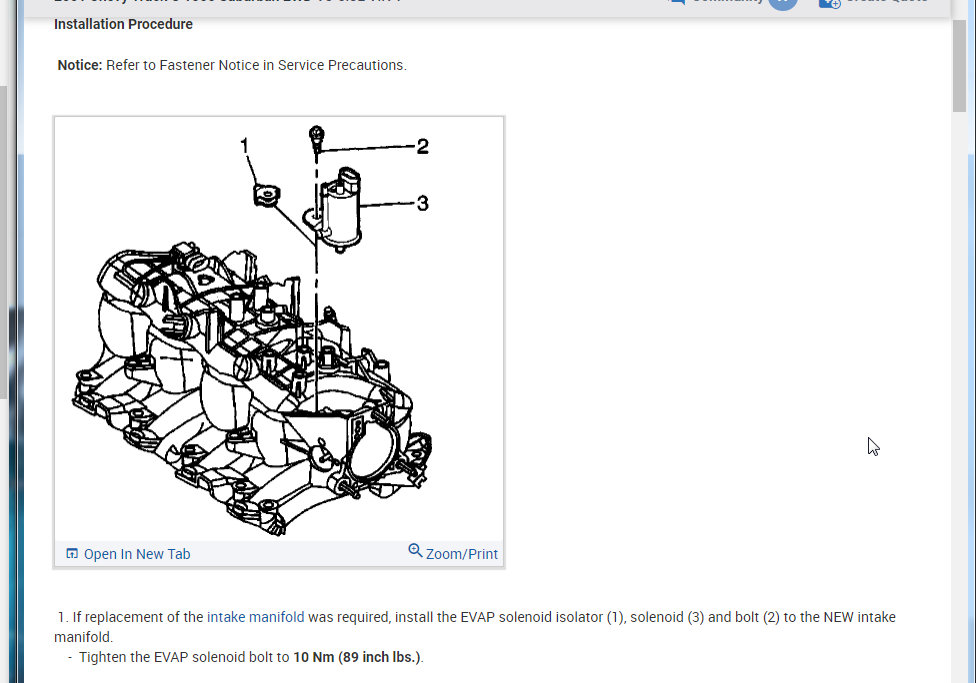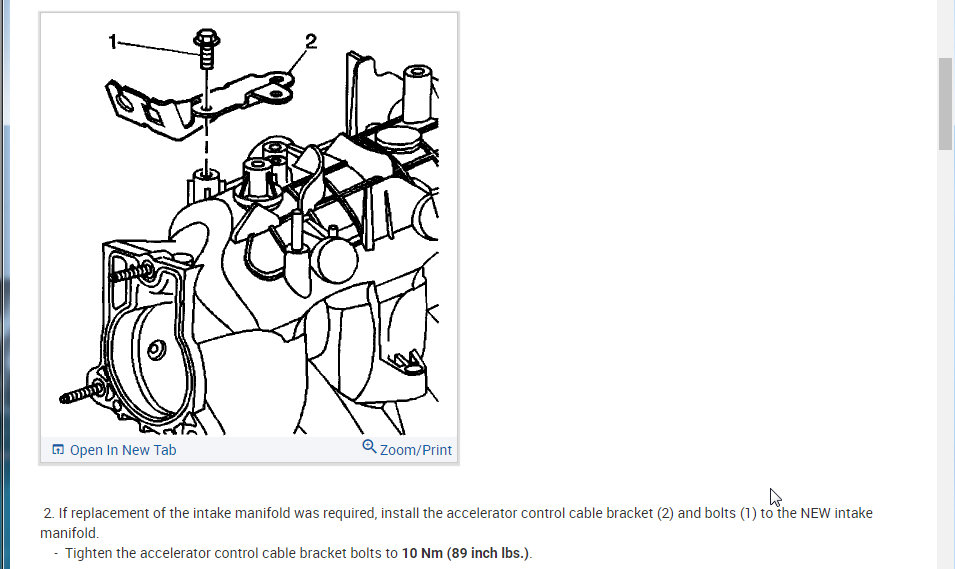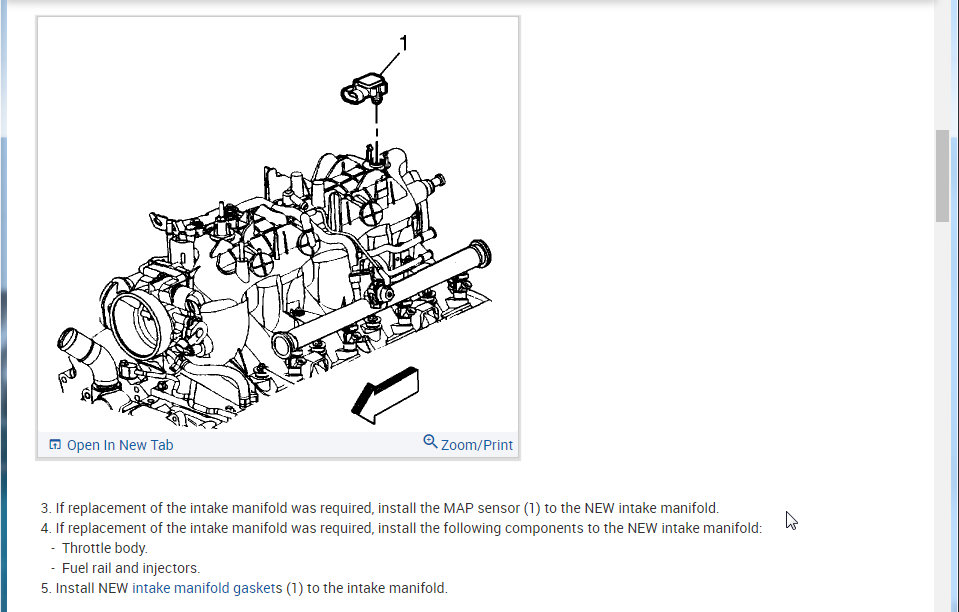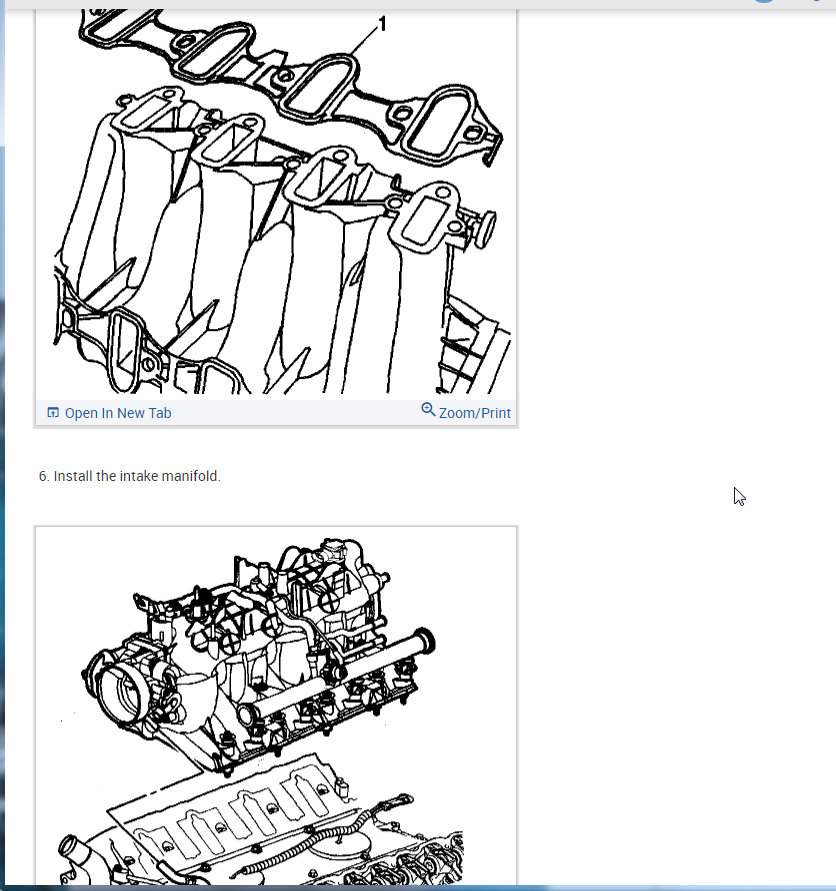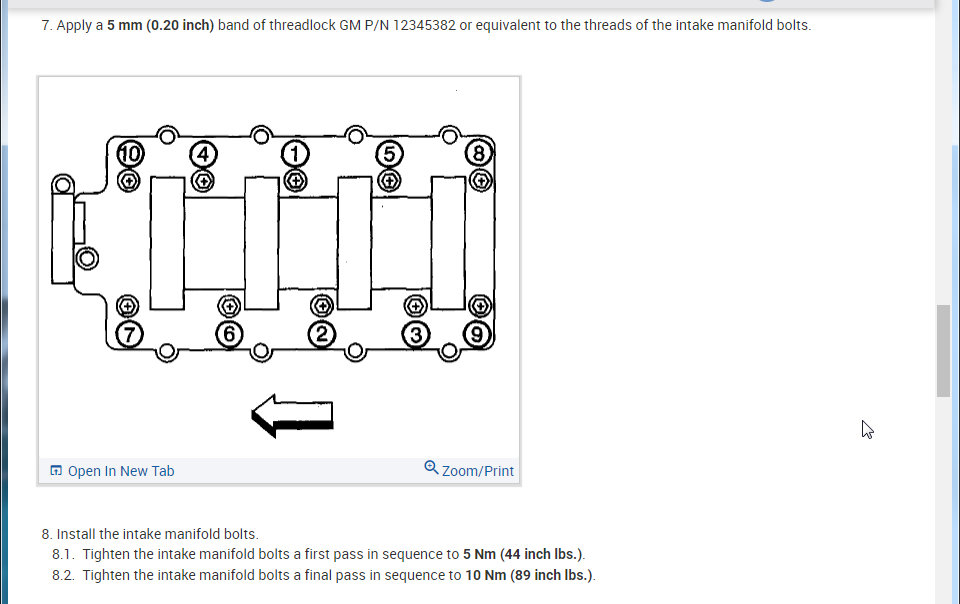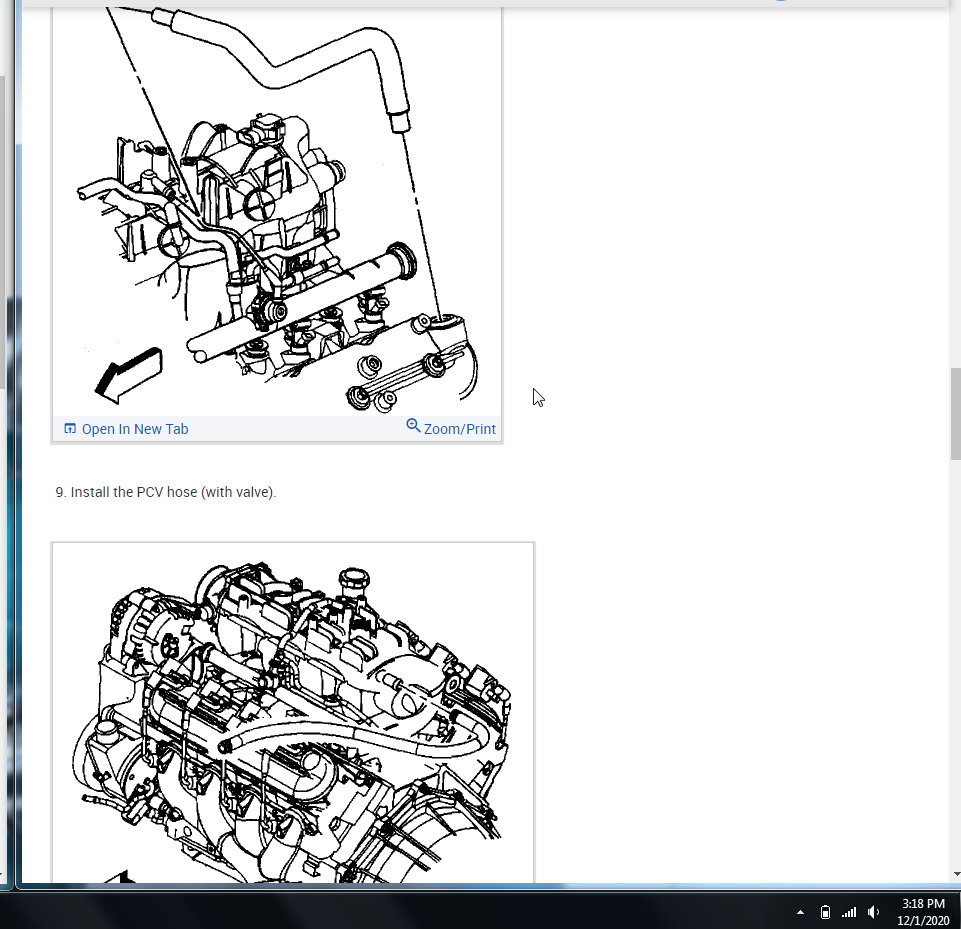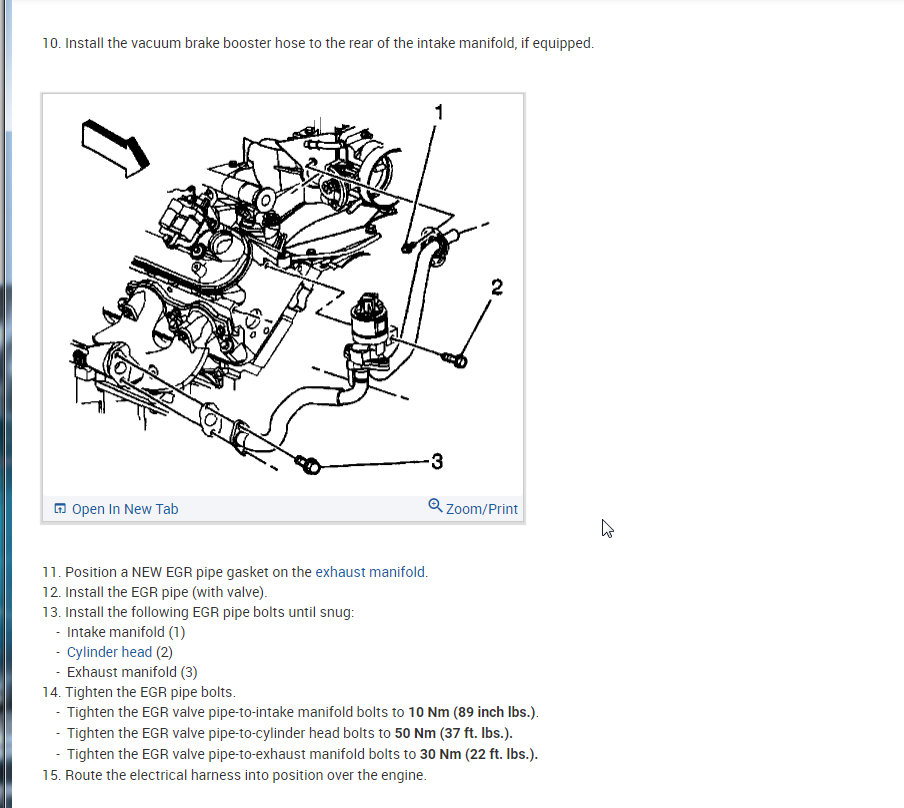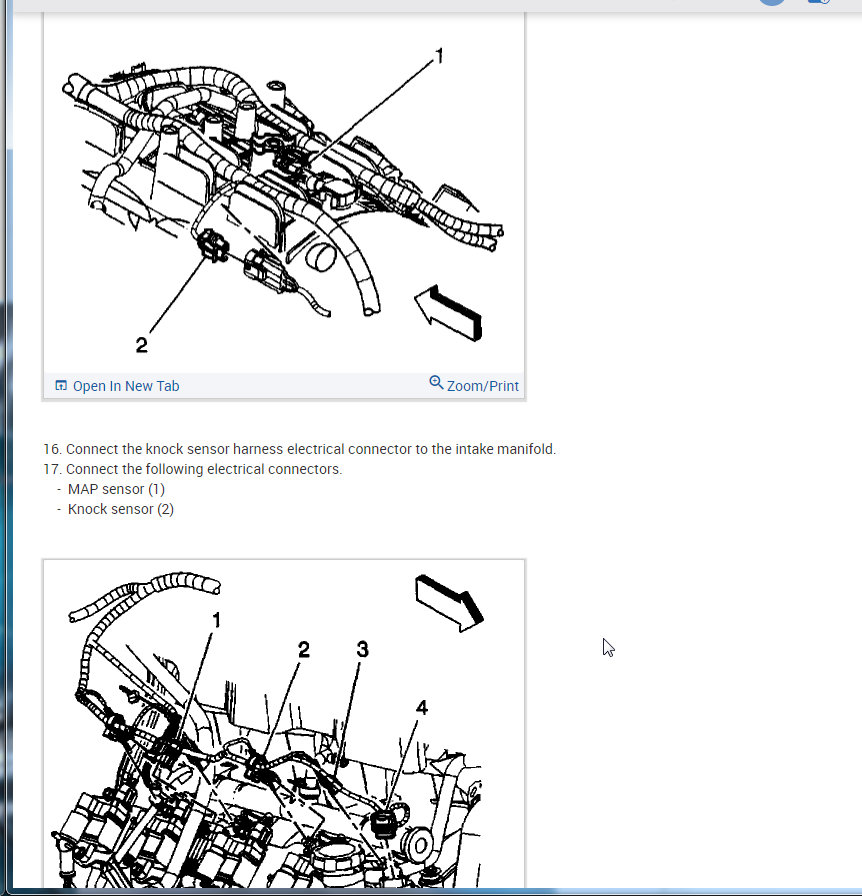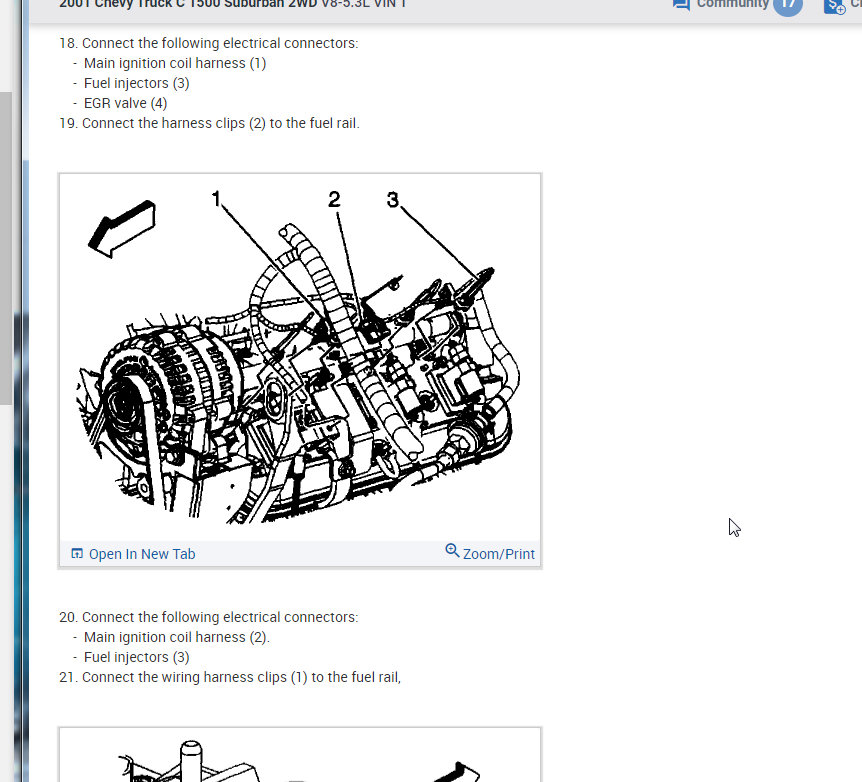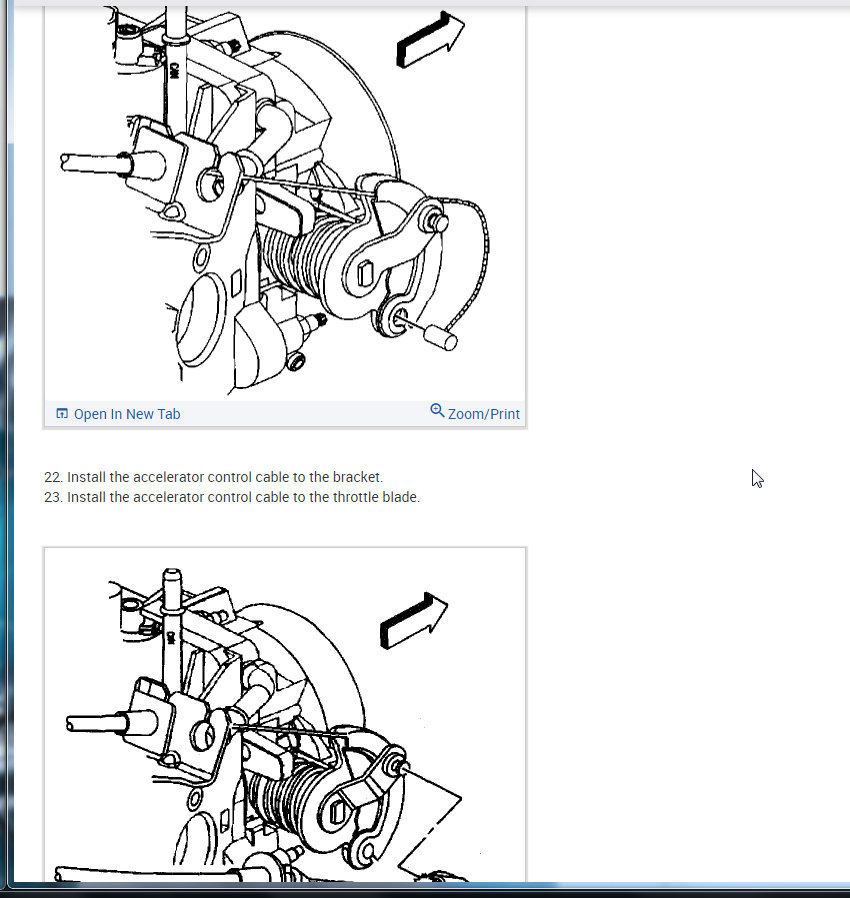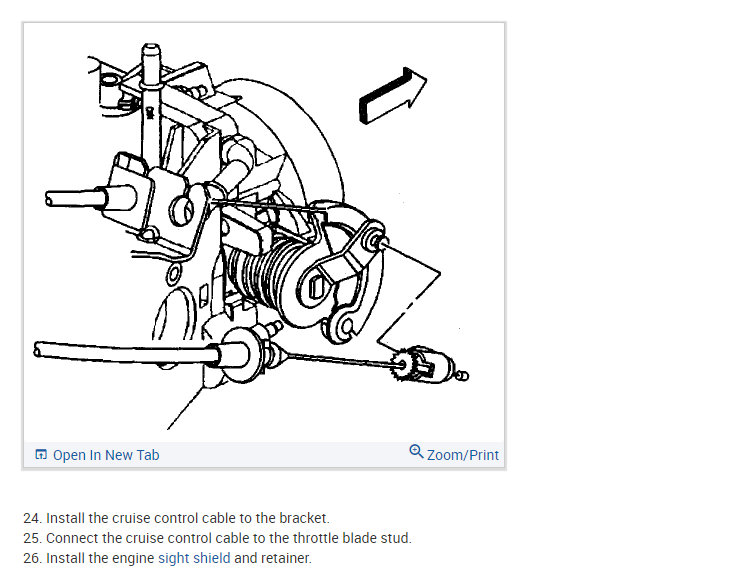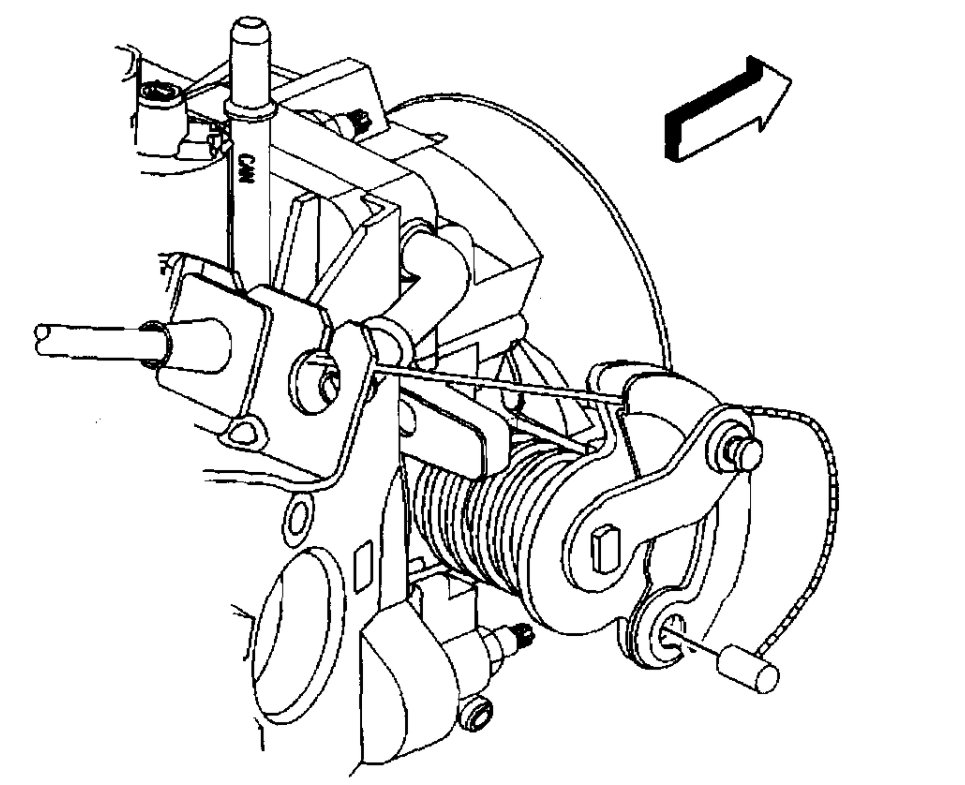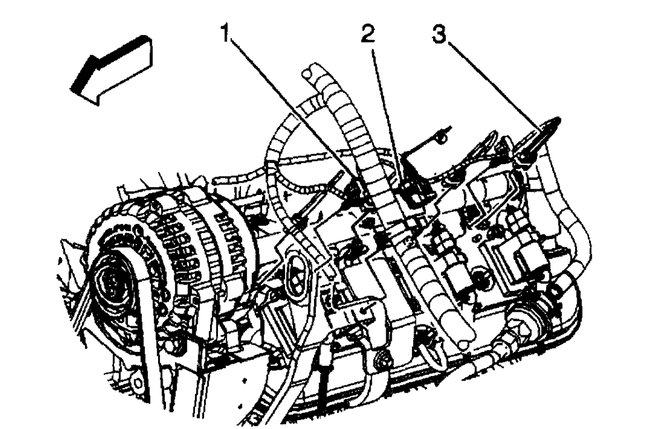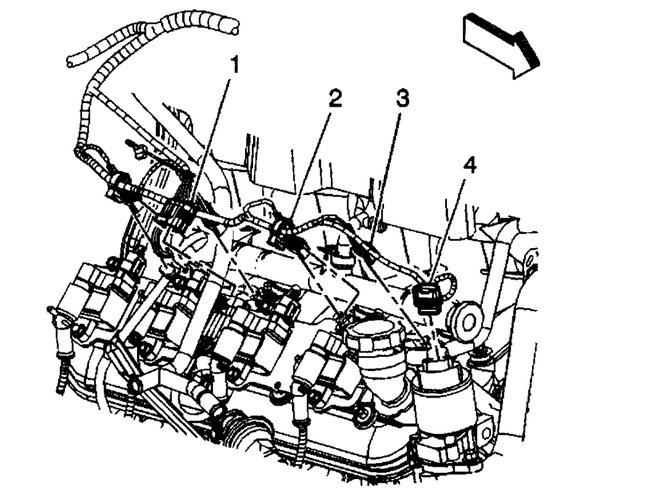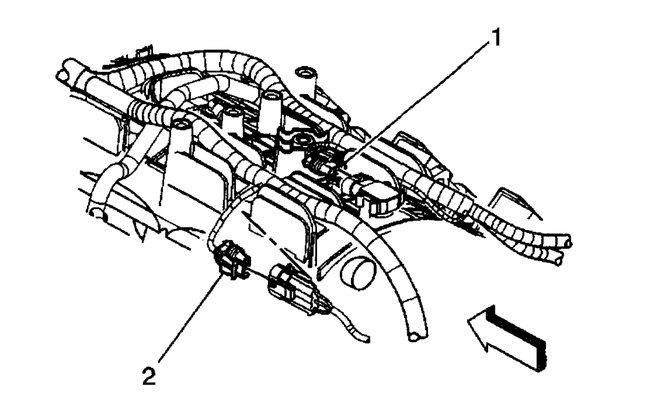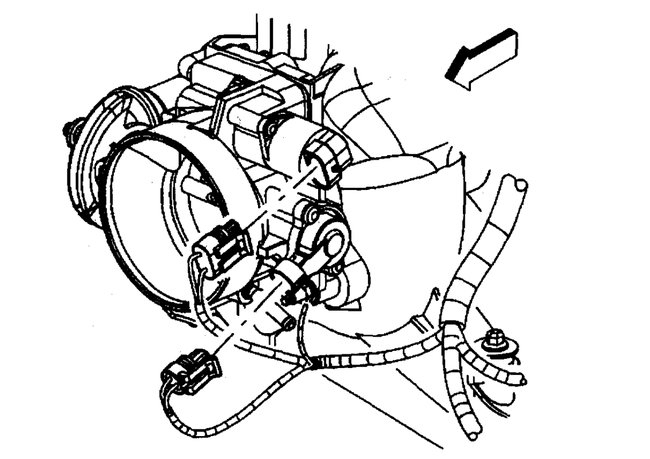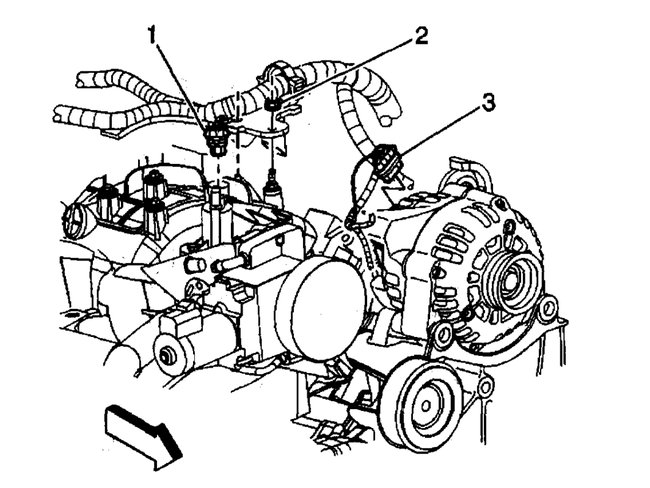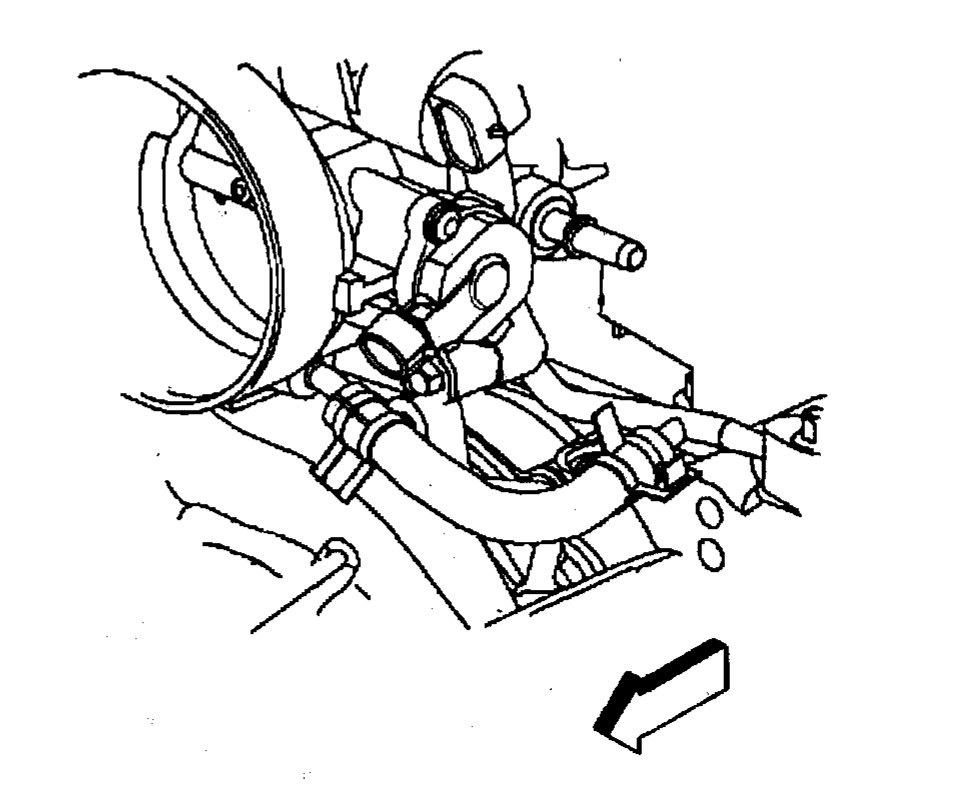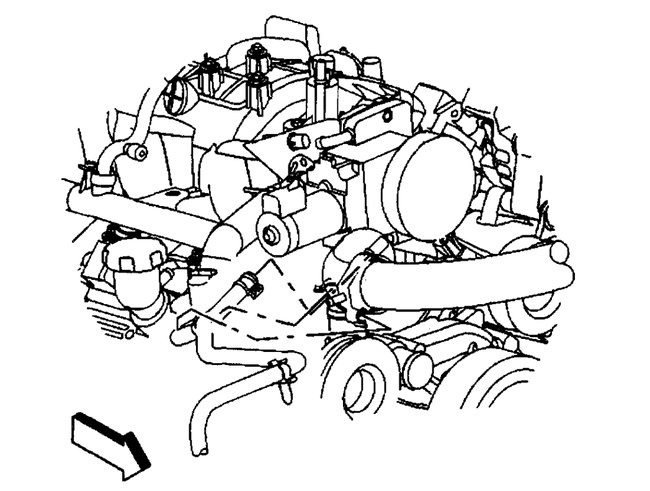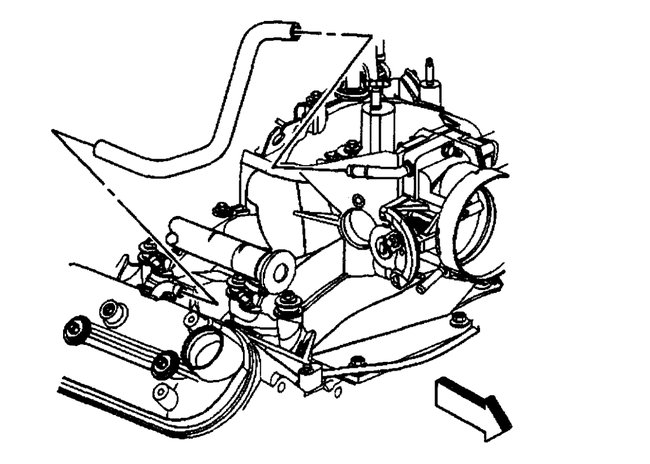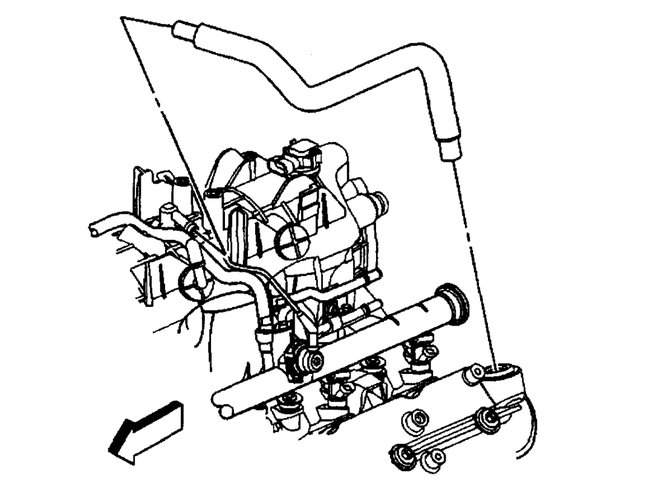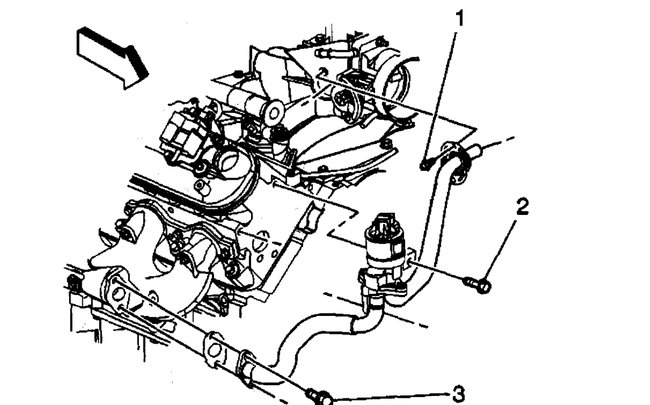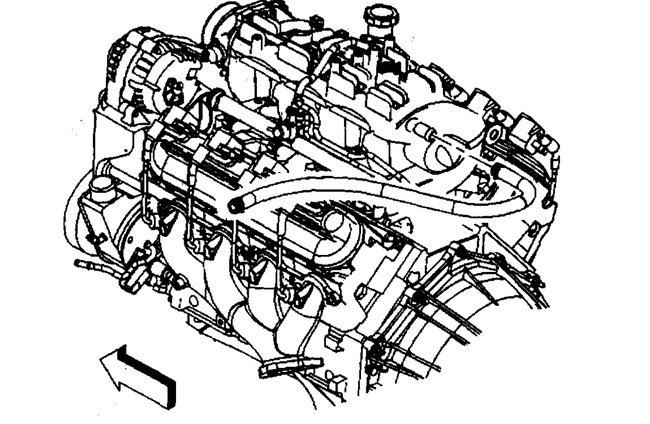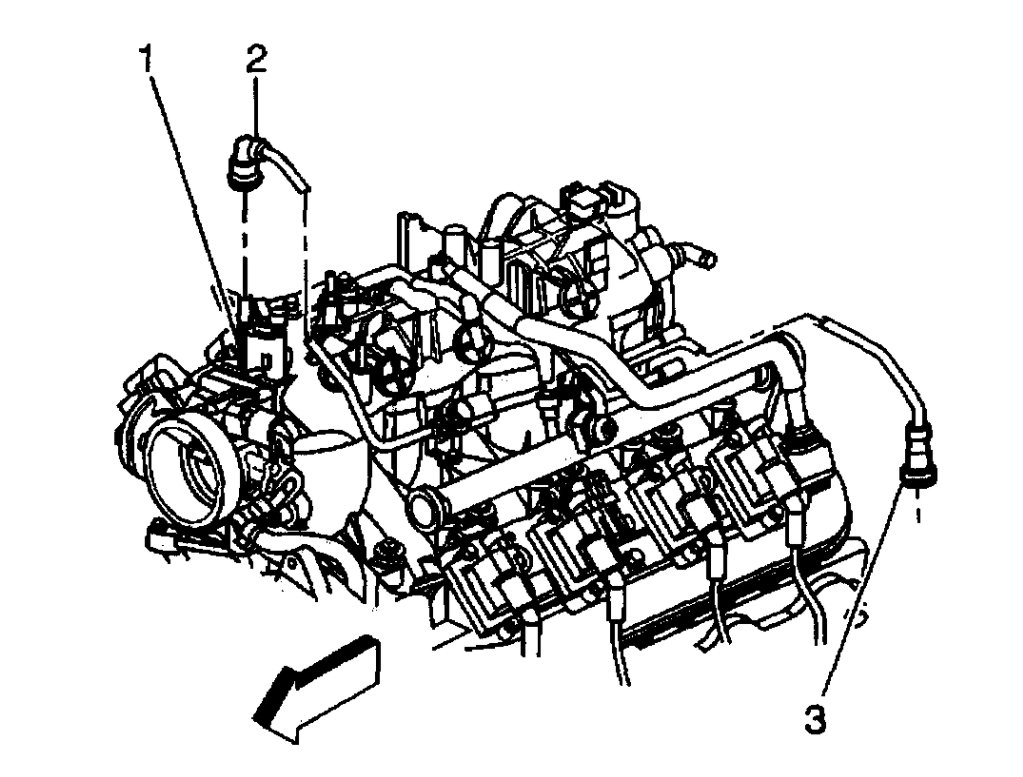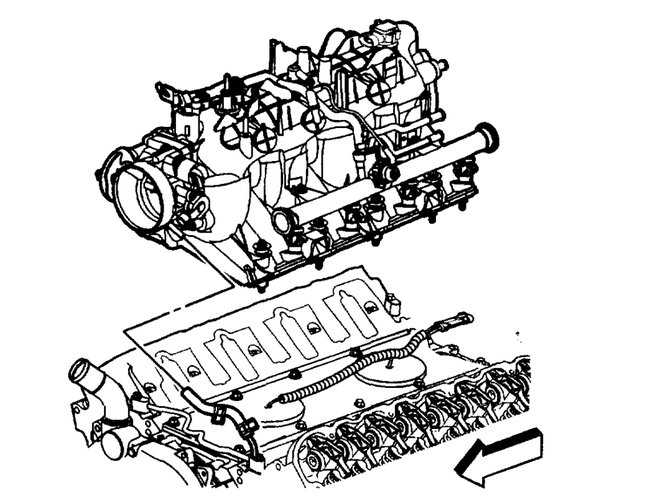Good afternoon,
Yes, it could be the vacuum leak from the intake. I posted the procedure and pictures below for you.
https://www.2carpros.com/articles/replace-intake-manifold-gasket
Roy
Intake Manifold Replacement
Removal Procedure
Important: The intake manifold, throttle body, fuel rail, and injectors may be removed as an assembly. If not servicing the individual components, remove the manifold as a complete assembly.
imageOpen In New TabZoom/Print
1. Remove the engine sight shield and retainer.
2. Relieve the fuel system pressure.
3. Disconnect the cruise control cable from the throttle blade stud.
4. Remove the cruise control cable from the bracket.
imageOpen In New TabZoom/Print
5. Remove the accelerator control cable from the throttle blade.
6. Remove the accelerator control cable from the bracket.
imageOpen In New TabZoom/Print
7. Disconnect the following electrical connectors:
Main ignition coil harness (2).
Fuel injectors (3)
8. Disconnect the wiring harness clips (1) from the fuel rail.
imageOpen In New TabZoom/Print
9. Disconnect the following electrical connectors:
Main ignition coil harness (1)
Fuel injectors (3)
Exhaust gas recirculation (EGR) valve (4)
10. Disconnect the harness clips (2) from the fuel rail.
imageOpen In New TabZoom/Print
11. Disconnect the following electrical connectors:
Manifold absolute pressure (MAP) sensor (1)
Knock sensor (2)
12. Remove the knock sensor harness electrical connector from the intake manifold.
13. Set the electrical harness aside.
imageOpen In New TabZoom/Print
14. Disconnect the following electrical connectors:
Throttle Position (TP) sensor, if equipped
Electronic Throttle Control (ETC) motor, if equipped
Idle Air Control (IAC) valve
imageOpen In New TabZoom/Print
15. Disconnect the following electrical connectors:
Purge solenoid (1)
Generator (3)
16. Remove the wiring harness bracket nut.
17. Remove the harness bracket from the stud.
18. Reposition the engine wiring harness.
imageOpen In New TabZoom/Print
19. Reposition the coolant air bleed hose at the throttle body.
20. Remove the coolant air bleed hose from the throttle body.
imageOpen In New TabZoom/Print
21. Reposition the radiator vent inlet hose clamp at the throttle body.
22. Remove the radiator vent inlet hose from the throttle body.
imageOpen In New TabZoom/Print
23. Remove the Positive Crankcase Ventilation (PVC) hose from the throttle body and rocker arm cover.
imageOpen In New TabZoom/Print
24. Remove the PCV hose (with valve) from the intake manifold and rocker arm cover.
imageOpen In New TabZoom/Print
25. Remove the following EGR pipe bolts:
Intake manifold (1)
Cylinder head (2)
Exhaust manifold (3)
imageOpen In New TabZoom/Print
26. Remove the EGR pipe (with valve).
27. Remove the EGR pipe gasket from the exhaust manifold.
28. If equipped, remove the vacuum brake booster hose from the rear of the intake manifold.
imageOpen In New TabZoom/Print
29. Remove the Evaporative Emission (EVAP) purge solenoid vent tube by performing the following:
29.1. Remove the EVAP tube end (2) from the solenoid (1).
29.2. Squeeze the EVAP pipe quick connect fitting (3) retainer together.
29.3. Remove the EVAP tube end (3) from the vapor pipe.
30. Disconnect the fuel line quick connect fittings.
imageOpen In New TabZoom/Print
31. Remove the intake manifold bolts.
32. Remove the intake manifold.
Images (Click to make bigger)
Tuesday, December 1st, 2020 AT 12:22 PM
